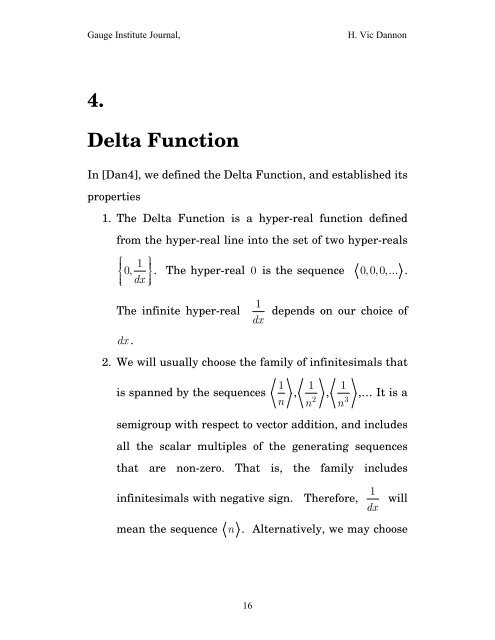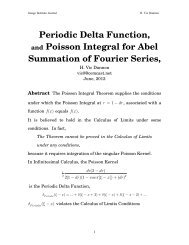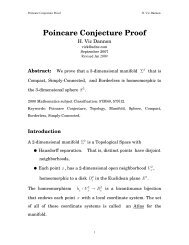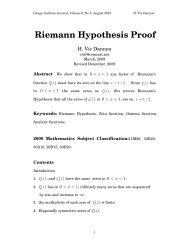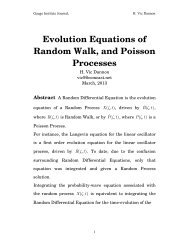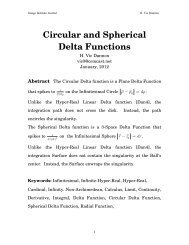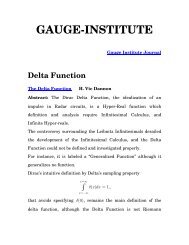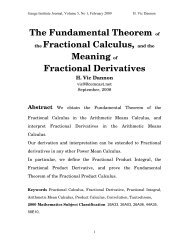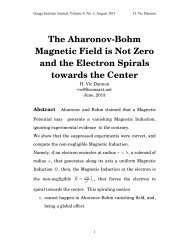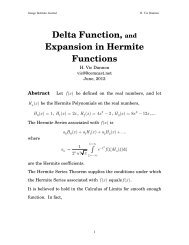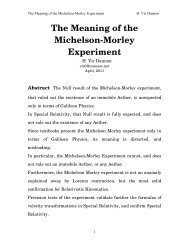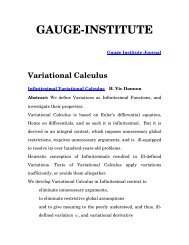Einstein's Diffusion and Probability-Wave Equations of Random ...
Einstein's Diffusion and Probability-Wave Equations of Random ...
Einstein's Diffusion and Probability-Wave Equations of Random ...
Create successful ePaper yourself
Turn your PDF publications into a flip-book with our unique Google optimized e-Paper software.
Gauge Institute Journal,<br />
H. Vic Dannon<br />
4.<br />
Delta Function<br />
In [Dan4], we defined the Delta Function, <strong>and</strong> established its<br />
properties<br />
1. The Delta Function is a hyper-real function defined<br />
from the hyper-real line into the set <strong>of</strong> two hyper-reals<br />
⎧<br />
⎪ 1 ⎫<br />
⎨0, ⎪<br />
⎬. The hyper-real 0 is the sequence 0, 0, 0,... .<br />
⎪⎩<br />
dx ⎪ ⎭<br />
The infinite hyper-real 1<br />
dx<br />
depends on our choice <strong>of</strong><br />
dx .<br />
2. We will usually choose the family <strong>of</strong> infinitesimals that<br />
is spanned by the sequences<br />
1<br />
n , 1<br />
2<br />
n<br />
,<br />
1<br />
n<br />
3<br />
,… It is a<br />
semigroup with respect to vector addition, <strong>and</strong> includes<br />
all the scalar multiples <strong>of</strong> the generating sequences<br />
that are non-zero. That is, the family includes<br />
infinitesimals with negative sign. Therefore,<br />
1<br />
dx<br />
will<br />
mean the sequence n . Alternatively, we may choose<br />
16


